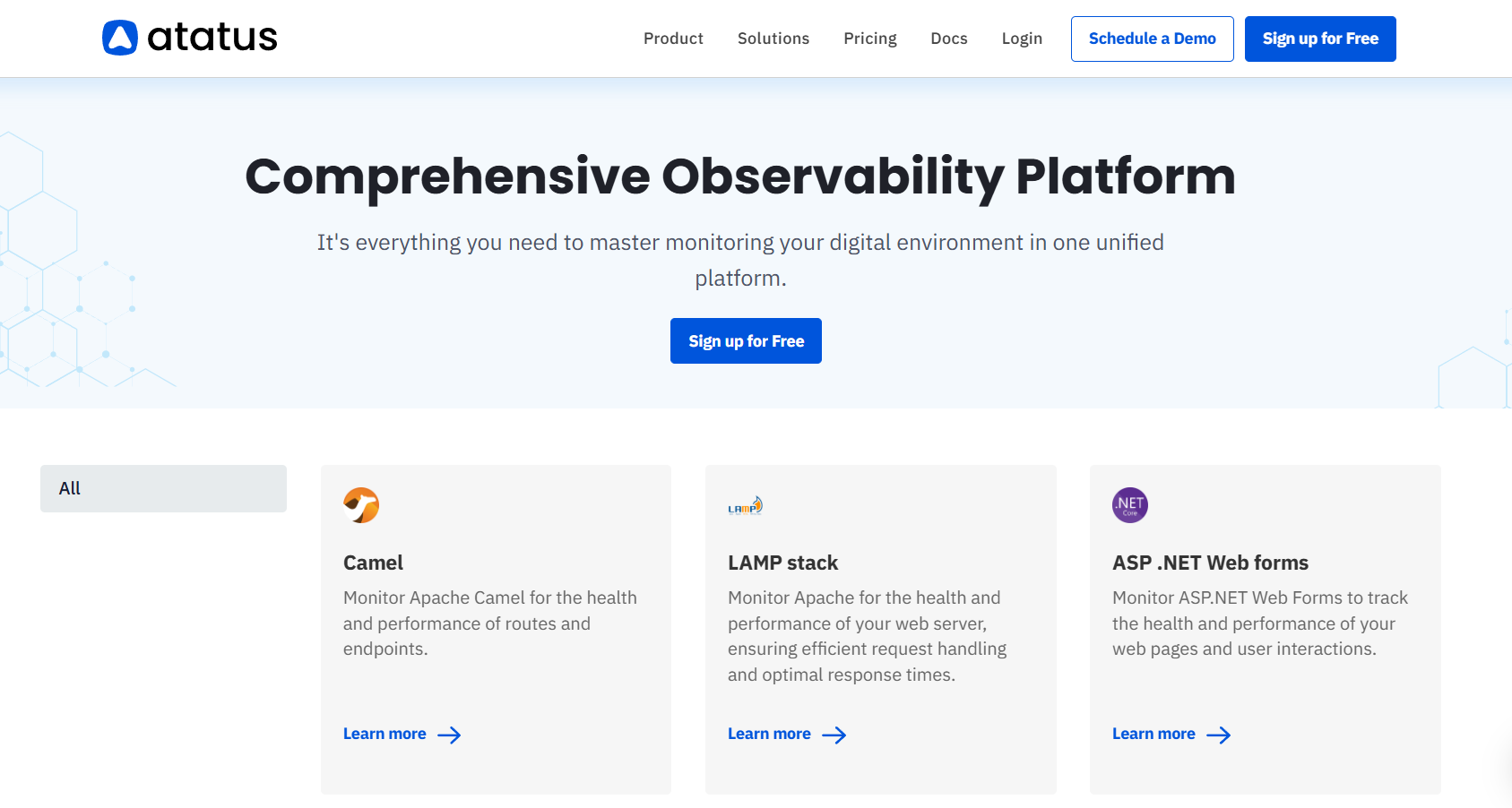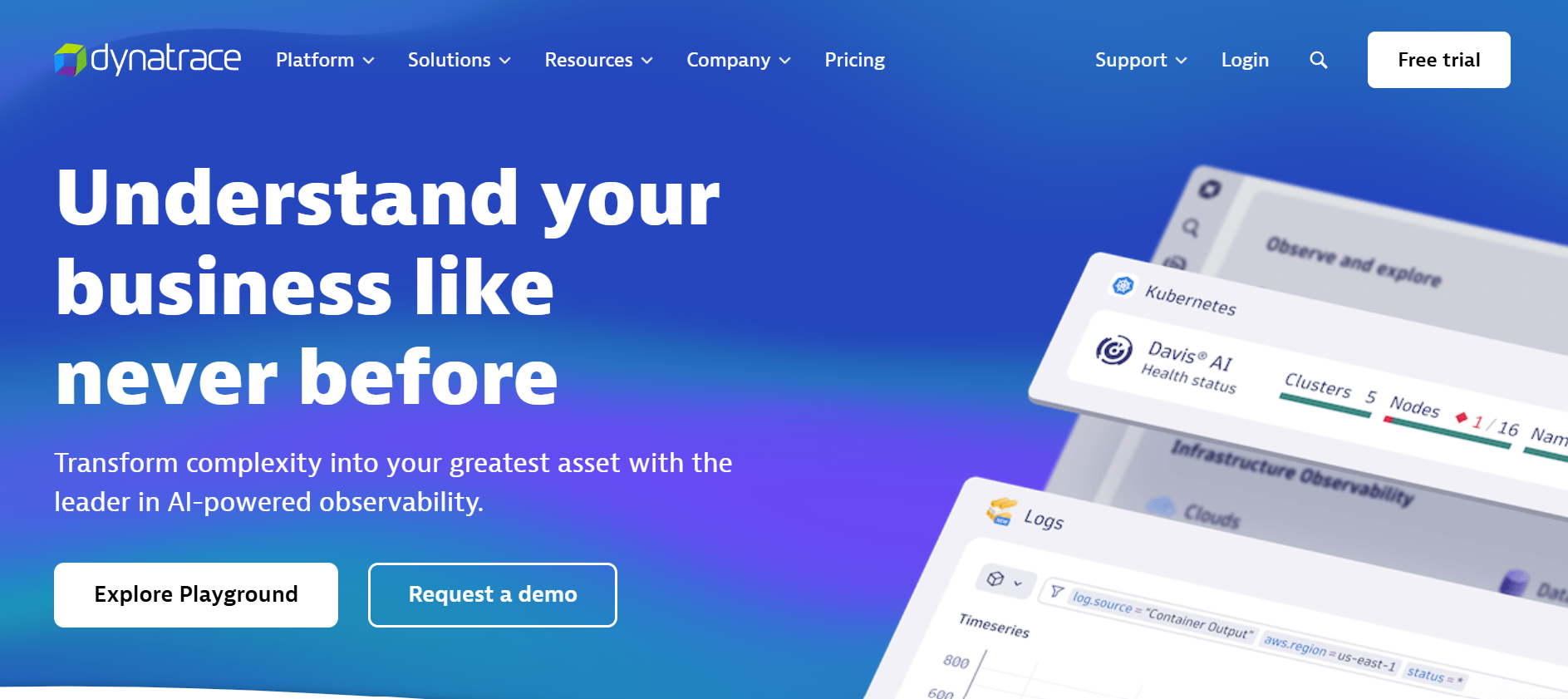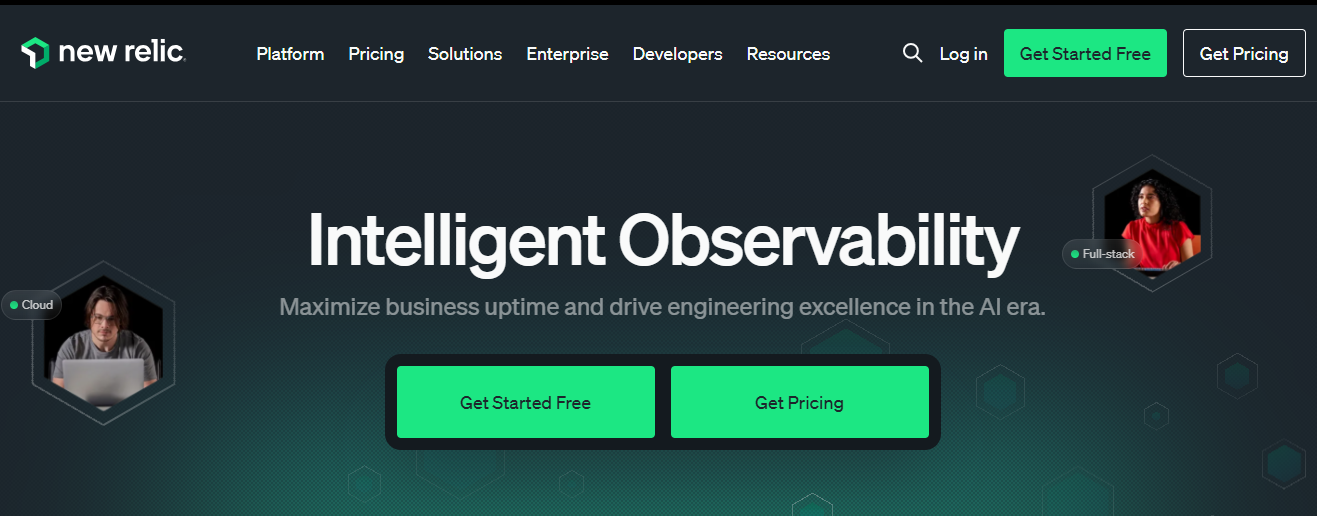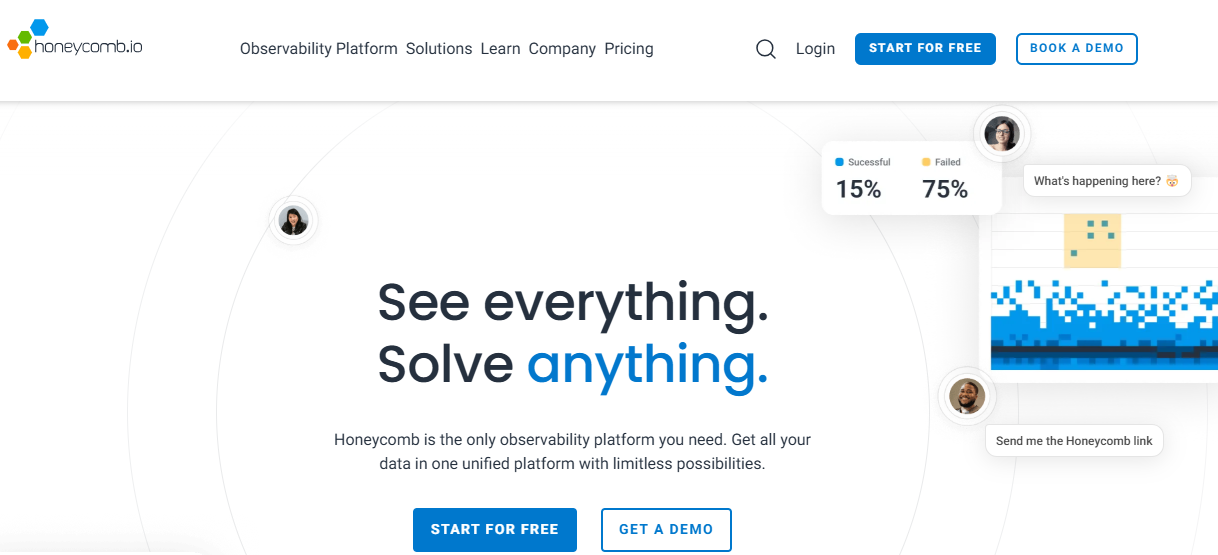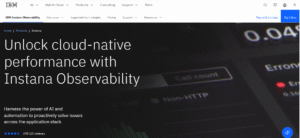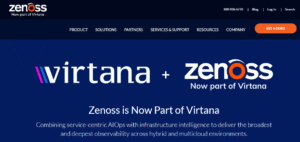Atatus is known for its simplicity and developer-first focus, making it especially appealing for startups, agile teams, and engineering teams in SMBs. As of 2024, Atatus is used by over 220 organizations globally, primarily in tech, SaaS, and ecommerce, with a strong emphasis on frontend/backend correlation and browser-level visibility.
However, as teams grow and their observability needs become more complex, many users begin to encounter limitations with Atatus. One of the most commonly reported pain points is the lack of self-hosting options, advanced alerting, and smart sampling, making it difficult to control ingestion volumes at scale. Atatus may feel great for getting started, but once you hit scale, it can become a bottleneck. These constraints often drive teams to search for more scalable and cost-efficient alternatives.
CubeAPM is the best alternative to Atatus and addresses these limitations with native OpenTelemetry support, full MELT (metrics, events, logs, and traces) visibility, and smart tail-based sampling to retain meaningful data. With self-hosting for compliance, blazing-fast dashboards, Slack-based support, 800+ integrations, and simplified pricing, CubeAPM emerges as the best alternative to Atatus.
In this article, we’ll walk through the top 7 Atatus alternatives based on OpenTelemetry support, pricing transparency, deployment flexibility, and customer reviews to help you find the right fit for your observability goals.
Table of Contents
ToggleTop 7 Alternatives to Atatus
- CubeAPM
- Datadog
- Dynatrace
- New Relic
- Splunk Appdynamics
- Honeycomb
- Grafana
Why People Are Looking for Atatus Alternatives
Atatus has made notable progress in recent years, adding OpenTelemetry (OTEL) ingestion support and expanding its coverage across APM, RUM, logs, synthetics, and infrastructure. However, despite these updates, engineering teams continue to explore alternatives as they scale beyond basic observability use cases. Several limitations still hold Atatus back when compared to more modern, enterprise-ready platforms.
1. Pricing Complexity and Scaling Costs
Atatus advertises simple pricing—$0.07 per host-hour for APM and $2/GB for log ingestion—but real-world costs often become unpredictable as environments scale. Host-hour billing quickly adds up in dynamic, auto-scaling environments or microservice-heavy stacks. For example, just one host running 24/7 costs over $50/month, and 100 APM hosts exceed $5,000/month—excluding logs, infrastructure metrics, and RUM, which are billed separately.
Teams on G2 note that Atatus lacks safeguards like sampling rules, throttling, or budget caps. That means sudden log or traffic spikes—such as during a release—can cause unexpected cost jumps. Compared to ingestion-based pricing tools like CubeAPM (e.g., $0.15/GB), Atatus becomes harder to forecast and optimize as you move beyond basic usage tiers.
2. No Smart Sampling
While Atatus now supports OpenTelemetry ingestion, it does not offer built-in smart sampling features such as tail-based or head-based sampling. This means teams don’t have native control over which traces to retain or drop based on error signals, latency, or business-critical conditions. All spans must be ingested in full unless sampling is handled manually in an upstream OpenTelemetry Collector.
This “ingest everything or nothing” limitation becomes costly and inefficient at scale. Without policy-driven filtering, teams often face a tough trade-off: either overpay for full-volume observability or lose crucial insights by dropping telemetry arbitrarily. Compared to modern platforms like CubeAPM—which offer contextual sampling at the ingestion layer—Atatus still falls short in giving teams the tools to reduce noise and control costs natively. For growing organizations, this lack of ingestion control can lead to performance bottlenecks, data overload, and unpredictable billing.
3. No Self-Hosting Option
Atatus remains a SaaS-only platform, offering no option for self-hosted or VPC deployments. For organizations with strict compliance requirements—such as those in finance, healthcare, or regions with data localization laws—this is a non-starter. Teams looking to keep observability data within their own cloud, or meet regulations like GDPR and HIPAA, need more flexible deployment options than what Atatus can provide.
4. Unclear Usage Limits
While Atatus is generally transparent in its pricing tiers, some users on platforms like G2 and Capterra report that resource limits—such as host caps or log ingestion thresholds—can surface unexpectedly as usage scales. These constraints are more noticeable on free or trial plans, where documentation may not fully explain backend enforcement. As a result, teams sometimes encounter degraded performance or billing surprises when their observability footprint grows beyond initially scoped limits.(G2, Capterra)
Criteria for Selecting Atatus Alternatives
1. Full Signal Coverage
Look for tools that offer comprehensive MELT support—Metrics, Events, Logs, Traces, along with RUM and synthetics. Platforms that centralize these signals reduce context switching and accelerate incident resolution through unified root cause analysis.
2. OpenTelemetry (OTEL) Native Support
Native OTEL compatibility ensures vendor-agnostic instrumentation and future-proof observability. It allows seamless integration across distributed environments without being locked into a single SDK or data format.
3. Smart Sampling & Ingestion Controls
Platforms with tail-based sampling or policy-driven data retention help teams retain important telemetry while controlling ingestion volumes. This directly translates into better cost efficiency and focused debugging.
4. Transparent & Scalable Pricing
Avoid per-host or per-feature pricing that escalates linearly. Prefer usage-based models (e.g., per ingested GB) with clear breakdowns, alerting thresholds, and budget controls to prevent surprise bills at scale.
5. Deployment Flexibility (SaaS & Self-Hosting)
Choose tools that support both cloud-hosted and on-premise deployment options. This ensures compliance with data residency requirements and gives organizations more control over performance, security, and cost.
6. Enterprise Readiness
Look for features like RBAC, SSO/SAML, audit logs, compliance certifications (SOC2, HIPAA), and team-level isolation. These are essential for larger organizations with formal security and operational requirements.
7. Ease of Instrumentation & Setup
Modern platforms should offer agent-based auto-instrumentation, fast setup guides, SDK support, and minimal overhead to get started. Tools that simplify onboarding reduce developer friction and increase adoption.
8. Support Quality & Ecosystem Maturity
Reliable vendor support (email, chat, Slack) and an active integration ecosystem (Terraform, CI/CD tools, cloud platforms) are crucial. Evaluate both response time and community resources when comparing alternatives.
Atatus Overview
Known for
Atatus is primarily known as a lightweight, full-stack observability platform that caters to small and mid-sized engineering teams. It offers Application Performance Monitoring (APM), Real User Monitoring (RUM), logs, uptime checks, infrastructure monitoring, and API analytics in a unified dashboard designed for simplicity and speed.
Standout Features
- Real User Monitoring (RUM): Tracks user journeys in real time, capturing frontend performance metrics like Time to Interactive (TTI), First Contentful Paint (FCP), and user geography.
- Error Tracking: Detects and reports errors in JavaScript and backend code with contextual details such as stack trace, user agent, and impacted sessions.
- Uptime Monitoring: Provides HTTP status checks and alerting with configurable regions and frequency.
- Multi-channel Alerting: Supports alerts via Slack, PagerDuty, Opsgenie, email, and webhook integrations for fast incident routing.
Key Features
- APM Tracing: Monitors backend performance with service-level traces and latency breakdowns.
- Log Management: Centralized logging with filtering, search, and retention options, though with limited cross-signal correlation.
- Infrastructure Monitoring: Provides CPU, memory, and disk metrics from connected hosts and containers.
- Custom Dashboards: Allows teams to visualize data from various signals using drag-and-drop widgets.
- Synthetics and API Monitoring: Simulates transactions and monitors the availability of key endpoints.
- JavaScript SDKs: Offers SDKs for JavaScript, Node.js, and frontend frameworks for quick instrumentation.
Pros
- Simple to set up with clear UI/UX, especially for developers new to observability.
- Full-stack coverage in a single, affordable platform for small teams.
- Offers multiple SDKs for backend and frontend instrumentation.
- Integrates with tools like Slack, Opsgenie, and Webhooks out of the box.
- Offers a freemium plan with limited features, making it attractive for startups.
Cons
- No smart sampling, which leads to excessive data ingestion and higher costs as telemetry scales.
- Pricing escalates quickly beyond small teams due to per-host billing and high log ingestion rates ($2/GB).
- Limited enterprise features, such as audit logs, anomaly detection, and advanced alert routing.
Best for
Atatus is ideal for small startups, developer-led teams, and SMBs looking for an affordable entry point into observability. It suits applications with lower telemetry volumes and minimal compliance or enterprise-grade requirements.
Pricing & Customer Reviews
- APM: $0.07 per host-hour per month,
- RUM: $1.96 per 10K views/month
- Logs: $2/GB/month
- Infra: $0.021
- Synthetics: $1.5/10k checks/month
- Analytics: $1/10k events/month
- G2 Rating: 4.5/5
- Praised for: Ease of use, responsive support, and quick setup.
- Criticized for: Limited advanced features, high costs at scale, and no OTEL support (G2).
Top 7 Atatus Alternatives
1. CubeAPM
Known for
CubeAPM is a next-generation observability platform purpose-built for high-resolution telemetry collection, data cost control, and OpenTelemetry-native operations. It enables full-stack observability across traces, metrics, logs, RUM, synthetics, and errors while giving teams granular control over data ingestion, retention, and hosting.
Standout Features
- Smart Sampling Engine: Intelligently retains error-heavy, latency-prone spans while discarding noise, reducing ingest volumes by up to 80% without compromising trace depth.
- One-Hour Deployment: Plug-and-play compatibility with Datadog, Prometheus, and OTEL agents allows teams to get production visibility in under 60 minutes.
- Direct Slack Support: Engineers get real-time help from the core team with sub-5-minute TAT, eliminating ticket queues and email delays.
- Drop-in Agent Compatibility: Smooth migration from other APM vendors through native compatibility with existing agents like Datadog, New Relic, and Prometheus.
Key Features
- Full MELT Observability: Tracks metrics, events, logs, traces, synthetics, and RUM on a unified platform with seamless signal correlation.
- OpenTelemetry-First Architecture: Built ground-up with OTEL, allowing vendor-neutral instrumentation and complete control over data flow.
- Self-Hosted & SaaS Flexibility: Offers both cloud-hosted and VPC/on-prem deployments to meet regulatory compliance needs such as GDPR, HIPAA, and RBI.
- Real-Time Alerts & Dashboards: Custom dashboards and anomaly-based alerting pipelines with Slack/webhook integrations out of the box.
- Transparent Pricing Model: $0.15/GB of data ingested, with no per-user fees.
- Enterprise-Grade Security: Includes SSO, role-based access control, and audit trails suitable for compliance-heavy industries.
Pros
- 800+ integration support
- Zero cloud egress charges
- Native support for OTEL and Prometheus out of the box
- Real-time trace sampling and cost optimization features
- Unified full-stack observability with prebuilt dashboards
- Slack-based support with sub-5-min turnaround
- On-premise deployment available for data sovereignty
- Ingestion-based pricing with no per-seat fees
Cons:
- Not ideal for teams looking for off-prem solutions
- Strictly an observability platform with no support for cloud security management
Best for
CubeAPM is perfect for teams that want fine-grained control over observability costs and deployment. It’s ideal for mid-to-large-scale DevOps teams, regulated industries, and businesses seeking OpenTelemetry-first architectures with compliance readiness and full MELT visibility.
Pricing & Customer Reviews
- Ingestion: $0.15/GB; infrastructure monitoring, synthetics, and error tracking are included at no extra cost.
- Score: 4.7/5
- Praised for: Rapid time to value, transparent pricing, blazing-fast Slack-based support
CubeAPM vs Atatus
Atatus offers a streamlined observability solution for small teams, but it becomes restrictive as engineering needs evolve. There’s also no smart sampling—every trace must be ingested fully, driving up costs at scale. Atatus also offers only SaaS deployment with no on-premise hosting, which is a dealbreaker for companies with strict data residency or compliance needs.
In contrast, CubeAPM delivers a truly OpenTelemetry-native experience with vendor-agnostic instrumentation, advanced smart sampling to cut ingest costs by up to 80%, and full support for self-hosted deployments. CubeAPM unifies MELT signals in a single platform with prebuilt dashboards and rich cross-signal correlations. For teams that need fine-grained observability with predictable pricing and enterprise compliance, CubeAPM is a long-term upgrade.
2. Datadog
Known for
Datadog is a comprehensive SaaS-based observability and security platform tailored for modern, distributed cloud environments. Its strength lies in combining monitoring, logging, tracing, RUM, and runtime security into a single pane of glass, backed by hundreds of integrations across cloud providers, container platforms, and third-party services.
Standout Features
- Extensive Integration Ecosystem: Over 900 native integrations, including Kubernetes, AWS, Azure, MongoDB, Jenkins, Kafka, and more, making it easy to plug into most tech stacks without custom work.
- Interactive Notebooks for RCA: Teams can investigate incidents collaboratively by combining live telemetry, annotations, and visualizations in a shared, commentable workspace.
- Unified DevSecOps View: Datadog bridges security and observability with built-in modules for cloud security posture management (CSPM), threat detection, and runtime container protection.
- Frontend Session Replay + RUM: Enables teams to replay real-user journeys while correlating frontend performance issues with backend bottlenecks.
- Deep Serverless Observability: Granular insights into AWS Lambda, Azure Functions, and Fargate workloads with cold-start metrics, invocation traces, and payload metadata.
Key Features
- All-in-One MELT Platform: Provides monitoring for metrics, events, logs, traces, synthetics, and user behavior with centralized dashboards and alerting.
- Auto-Instrumentation Across Languages: Supports out-of-the-box instrumentation for Java, Python, Go, Node.js, .NET, PHP, and others with minimal code changes.
- Cloud-Native Monitoring: Includes first-party integrations with Kubernetes, ECS, Azure Monitor, GCP Stackdriver, and more.
- Built-in Security Telemetry: Tracks vulnerabilities, audit logs, configuration drifts, and runtime threats from infrastructure to applications.
- CI/CD Pipeline Insights: Correlates telemetry with deployments and build artifacts to detect regressions introduced during software releases.
- Live Dashboards with Data Correlation: Customizable dashboards that support real-time queries, thresholds, alerts, and context-aware overlays.
Pros
- Market-leading breadth of integrations across infrastructure and application layers
- Combines observability with security analytics in a single platform
- Deep visibility into containerized and serverless workloads
- Supports complex dashboards and advanced alert logic for large teams
- Ideal for hybrid cloud and microservices-heavy deployments
Cons
- Pricing model is complex and often results in surprise bills, especially for logs and synthetics
- Lacks full OpenTelemetry-native support—uses proprietary agents and format
- Sampling is head-based, which may miss rare but critical traces unless carefully tuned
- SaaS-only architecture; cannot be self-hosted or deployed in private networks
- Smaller customers often report delayed support or difficulty with billing transparency
Best for
Datadog is a strong fit for mature DevOps and platform engineering teams operating in fast-moving cloud-native environments. Enterprises running Kubernetes, serverless workloads, or multi-cloud apps benefit from its broad integrations, real-time dashboards, and built-in security telemetry—all in a unified observability stack.
Pricing & Customer Reviews
- Infrastructure Monitoring: $15–$34/host/month
- APM: $31–$40/host/month annually
- Logs: $0.10/GB + $1.70/M events for 15-day retention
- Serverless: $10 per million invocations
- RUM/Synthetics and Security add-on pricing varies
- G2 Rating: 4.4/5 (based on 630+ reviews)
- Praised for: Ecosystem depth, customizable dashboards, powerful integrations
- Criticized for: High and unpredictable costs, lack of self-hosted options, and agent lock-in
Datadog vs Atatus
While both platforms provide full-stack observability, Datadog far surpasses Atatus in terms of depth, integrations, and security capabilities. It offers advanced DevSecOps tooling, deeper serverless visibility, and richer correlation views for distributed environments. However, Atatus remains easier to adopt and cheaper at small scale. That said, teams growing beyond basic observability or entering multi-cloud/Kubernetes workloads will find Datadog’s unified approach and robust analytics a powerful step up, though they should be prepared for higher costs and steeper learning curves.
3. Dynatrace
Known for
Dynatrace is an enterprise-grade observability platform built to automate everything from service discovery to root cause analysis and application threat detection. It’s engineered for high-scale, hybrid-cloud environments where uptime, speed, and intelligent correlation matter most. Powered by its proprietary Davis AI engine, Dynatrace eliminates manual triage by detecting anomalies and mapping dependencies in real time.
Standout Features
- Smartscape Topology Mapping: Dynamically maps every service, host, container, and process into a live dependency graph, enabling AI to understand the system’s behavioral baseline
- Davis AI-Powered RCA: Uses machine learning to correlate telemetry data across layers—MELT, user sessions, and deployments—surfacing root causes instead of noisy symptoms.
- Unified Observability + Application Security: Combines APM and security by monitoring code-level vulnerabilities and runtime threats without requiring extra agents.
- Synthetics + RUM Correlation: Offers both synthetic transaction testing and real user behavior tracking, linked directly to backend performance data for end-to-end visibility.
Key Features
- All-in-One MELT Visibility: Covers metrics, logs, events, traces, synthetics, and user behavior in one integrated interface.
- Autonomous Instrumentation: Automatically detects services, VMs, APIs, containers, and dependencies—ideal for large-scale or dynamic infrastructure.
- AI-Curated Alerts & Anomalies: Reduces alert fatigue through real-time anomaly detection based on causal impact rather than simple thresholds.
- Deep Code-Level Tracing: Follows transactions through services, down to methods and classes, aiding performance optimization and regression detection.
- Cloud & Kubernetes Native: Out-of-the-box support for AWS, Azure, GCP, OpenShift, Kubernetes, and hybrid environments.
- Embedded Application Security: Monitors running applications using Runtime Application Self-Protection (RASP) for real-time security insights.
Pros
- AI-driven root cause analysis with high accuracy and minimal manual tuning
- Real-time Smartscape mapping of dependencies from infrastructure to frontend
- Automatic instrumentation saves setup time across services and containers
- Includes application security insights directly within the observability workflow
- Scales efficiently across large hybrid or multi-cloud environments
Cons
- Complex DDU-based pricing makes it hard to forecast usage costs
- Lacks native OpenTelemetry flexibility; relies heavily on proprietary agent
- Steep learning curve due to Dynatrace-specific terminologies and workflows
- Not suitable for teams that require on-prem deployment in regulated environments
Best for
Dynatrace is purpose-built for large enterprises operating mission-critical infrastructure that spans legacy, cloud-native, and containerized environments. Its AI-driven automation and full-stack visibility make it especially valuable for teams managing hundreds of services where speed, accuracy, and minimal manual effort are key to performance and security.
Pricing & Customer Reviews
- Full-Stack Monitoring: $0.08 per 8 GiB host/hour
- RUM: $0.00225 per session
- Synthetics: $0.001 per HTTP check
- App Security: $0.018/hour per host
- Kubernetes: $0.002/hour per pod
- G2 Rating: 4.5/5 (from over 1,300 reviews)
- Praised for: Powerful AI features, automated discovery, and full-stack correlation
- Criticized for: Unclear pricing structure, steep learning curve, and limited OTEL openness
Dynatrace vs Atatus
While Atatus offers straightforward observability features for logs, traces, and RUM, it lacks the intelligence and automation that Dynatrace brings to the table. Dynatrace’s strength lies in its AI-powered RCA, autonomous service mapping, and integrated security—none of which are available in Atatus. However, Dynatrace’s pricing and learning curve may deter smaller teams. In contrast, for enterprise IT teams needing automated, scalable observability with zero-touch instrumentation, Dynatrace is a major leap forward from Atatus’s basic toolset.
4. New Relic
Known for
New Relic is a cloud-native observability platform built for developers and SREs who demand fine-grained control over telemetry analysis and dashboard customizations. It offers full-stack monitoring and deep querying capabilities through its proprietary telemetry query language, delivering rich insights across applications, infrastructure, and user behavior in real time.
Standout Features
- Explorer View for Dependency Mapping: Offers an interactive, service-oriented view of your system, visualizing services, containers, and hosts with their health states and dependencies.
- NRQL for Precision Queries: Allows power users to craft advanced telemetry queries across logs, traces, and metrics using New Relic Query Language (NRQL), unlocking deep custom insights.
- Lookout for Smart Anomaly Detection: Uses statistical models to automatically surface spikes, regressions, or anomalous patterns in telemetry with reduced noise.
- Highly Configurable Dashboards: Lets teams build role-based views, custom layouts, and real-time visualizations tailored to different stakeholders and workflows.
Key Features
- End-to-End MELT Coverage: Monitors metrics, events, logs, traces, synthetics, and RUM in a unified experience, enabling full-scope observability.
- Language-Agnostic Auto-Instrumentation: Supports out-of-the-box agent-based instrumentation for Java, Python, Go, .NET, Node.js, and more.
- Cloud-Native Integration Suite: Offers plug-and-play compatibility with AWS, Azure, GCP, Kubernetes, and serverless platforms.
- Simulated and Real User Monitoring: Provides active checks for site availability and real user session insights, including page load, interaction delay, and browser metrics.
- Machine Learning-Based Alerts: Detects anomalies using historical baselines and predictive models to cut through alert fatigue.
- CI/CD Observability Hooks: Connects telemetry data to your software delivery lifecycle, enabling faster rollback and release insights.
Pros
- Powerful querying with NRQL enables deep, real-time analysis across all telemetry types
- Rich dashboarding experience with customizable layouts and widgets
- Unified observability stack with seamless coverage of logs, RUM, synthetics, and traces
- Fast onboarding and agent deployment across languages and platforms
- Prebuilt dashboards for Kubernetes, Lambda, and CI/CD systems streamline early usage
Cons
- No on-prem or bring-your-own-cloud deployment—limited to SaaS delivery
- Pricing includes ingest, user licenses, and retention, making cost control difficult at high scale
- Limited native OpenTelemetry integration; often requires sidecar proxies or custom configs
- Uses head-based sampling, which risks dropping rare events under load
- Support is primarily ticket-based, which can delay help during production outages
Best for
New Relic is best suited for observability-savvy DevOps and engineering teams operating in multi-cloud or Kubernetes environments. It’s ideal for teams that want complete flexibility in how they query, visualize, and correlate telemetry data—especially those focused on detailed release monitoring, incident forensics, and dashboard-driven workflows.
Pricing & Customer Reviews
- Free tier: 100 GB/month with 1 user
- Data Ingest: $0.35–$0.55/GB depending on retention tier
- Core User License: $49/user/month
- Full Platform Access: $99–$418/user/month
- G2 Rating: 4.4/5 (500+ reviews)
- Praised for: Dashboard flexibility, NRQL-powered analytics, and intuitive SaaS interface
- Criticized for: Complex pricing, lack of self-hosting, and weak OTEL-native support
New Relic vs Atatus
Atatus is simpler to adopt and has a more predictable pricing model at a small scale, but lacks the depth, extensibility, and dashboarding customization that New Relic delivers. With NRQL, users can extract nuanced telemetry insights that go beyond what Atatus’s default dashboards can offer. While Atatus covers MELT, New Relic links it all through powerful correlation tools, anomaly detection, and real user session data. Teams looking to go from basic observability to developer-driven telemetry intelligence will find New Relic a compelling—and far more flexible—alternative to Atatus.
5. Splunk AppDynamics
Known for
Splunk AppDynamics, now part of Cisco’s observability stack, specializes in performance monitoring at the transaction level, enabling real-time diagnostics of business-critical applications. It’s particularly favored by enterprises that operate complex monolithic and distributed systems and need full-stack visibility tied to user journeys and SLAs.
Standout Features
- Transaction-Level Tracing: Tracks user flows through backend services, external APIs, and databases, allowing teams to isolate the exact layer or function causing slowdowns in critical paths.
- Live Service Topology Maps: Dynamically visualizes how application components interact in production, highlighting real-time dependencies, latencies, and failure points.
- Code-Level Debugging: Allows developers to drill into method-level execution and analyze latency or memory issues in Java, .NET, PHP, and other supported languages.
- Dynamic Baselining for Anomaly Detection: Automatically generates performance baselines and flags deviations without manual threshold tuning, helping reduce noise and false positives.
Key Features
- End-to-End APM Instrumentation: Agent-based support for Java, .NET, Node.js, Python, and PHP enables precise tracking of services and transactions.
- Business Transaction Tagging: Maps telemetry to specific business workflows, enabling SLA and revenue-impact monitoring.
- Full-Stack RUM & Synthetics: Combines frontend experience monitoring with synthetic availability testing to offer holistic visibility.
- Hybrid Deployment Support: Monitors apps running on cloud, on-premise, and mixed infrastructure with equal depth.
- Runtime Security Visibility: Integrates with Cisco Secure Application to detect vulnerabilities and application-layer threats during runtime.
- CI/CD Monitoring Hooks: Tracks build and deployment events in the context of telemetry, aiding rollback decisions and release validation.
- Auto-Discovery for Dynamic Environments: Identifies new services, traffic flows, and dependencies automatically in changing environments.
Pros
- Powerful business transaction mapping for SLA-based performance management
- Deep application diagnostics with code-level visibility
- Robust hybrid and legacy infrastructure monitoring
- Seamless integration into Cisco’s security and observability stack
- Baseline-driven alerting reduces configuration overhead and alert fatigue
Cons
- Pricing is based on vCPU, making cost estimation hard as environments grow
- Does not support native OpenTelemetry instrumentation or ingestion
- Data routing through vendor pipelines can introduce hidden ingestion and egress costs
- Migration away from AppDynamics requires agent re-instrumentation due to the proprietary format
- Support is often routed through partners or sales teams, slowing time-to-resolution during incidents
Best for
Splunk AppDynamics is ideal for large enterprises operating under strict SLAs and needing deep application intelligence across hybrid or on-prem environments. Its ability to tie performance metrics directly to business workflows makes it a top choice for teams focused on revenue-impacting services, though it’s less suited for engineering teams seeking modern OTEL-native pipelines or flexible pricing.
Pricing & Customer Reviews
- Infrastructure Monitoring: $6/vCPU/month
- Premium Edition (Infra + APM): $33/vCPU/month
- Enterprise Edition: $50/vCPU/month with business telemetry features
- RUM: From $0.06 per 1,000 tokens
- Synthetics: Starting at $12/location/month
- G2 Rating: 4.3/5 (375+ reviews)
- Praised for: Business transaction visibility, hybrid deployment support, and deep diagnostics
- Criticized for: Opaque pricing, limited OTEL support, and sluggish partner-based support channels
Splunk AppDynamics vs Atatus
AppDynamics offers transaction-first observability with code-level traceability and hybrid deployment support—capabilities that Atatus lacks. While Atatus provides decent frontend and backend monitoring for smaller teams, it doesn’t deliver SLA-centric tracing or dynamic baselining. Additionally, AppDynamics integrates runtime security insights, which Atatus doesn’t support. For enterprise IT teams managing legacy or mission-critical systems, AppDynamics offers a more structured and diagnostic-rich platform than Atatus, though it comes at a higher operational and financial cost.
6. Honeycomb
Known for
Honeycomb is a high-cardinality observability platform built for modern engineering teams that need fast, query-driven debugging and trace-level insight into complex distributed systems. It excels in exploratory observability, where developers investigate unknown unknowns—especially in environments like microservices, Kubernetes, and event-driven architectures.
Standout Features
- BubbleUp for Root Cause Isolation: This signature tool highlights anomalies by automatically surfacing the dimensions that deviate from normal behavior, making it easier to investigate outliers in traces or logs.
- Columnar Query Engine: Built for speed and flexibility, Honeycomb’s query engine allows slicing and dicing millions of spans across high-cardinality fields with sub-second latency.
- Service Map Autogeneration: Visualizes dependencies across services based on trace data, helping teams understand how services interact in production.
- Tail-Based Sampling for Precision: Captures only the most useful traces after they complete, ensuring rare issues (e.g., high-latency or failed requests) are retained without overwhelming storage.
Key Features
- Native OpenTelemetry Integration: Built from the ground up to support OTEL pipelines, ensuring easy ingestion and vendor-agnostic instrumentation.
- Event-Based Observability: Focuses on spans and events over time, making it ideal for detailed behavioral analysis across distributed services.
- Trace Explorer: Enables engineers to filter and pivot trace datasets across fields like latency, HTTP status, user ID, or feature flag, without needing predefined dashboards.
- High-Cardinality Data Handling: Optimized to work with millions of unique field combinations, making it ideal for real-time debugging across dynamic services.
- Query History & Collaboration: Teams can revisit, clone, and share complex queries to enable collective debugging and knowledge reuse.
- SaaS Deployment with Team Workflows: Includes team-focused views and access control, with preconfigured dashboards and workspace segmentation.
Pros
- Excellent for debugging unpredictable or emergent issues in distributed systems
- BubbleUp and columnar queries enable fast outlier analysis
- Tail-based sampling preserves the most relevant traces efficiently
- OTEL-native by default, enabling modern instrumentation pipelines
- No rigid dashboards—users can flexibly query any field at any time
Cons
- Lacks integrated metrics or log storage—requires pairing with tools like Prometheus or ELK
- No on-prem hosting or BYOC options; limited to SaaS delivery
- Pricing based on event volume may be hard to predict during traffic spikes
- Steeper learning curve for teams not familiar with trace-centric workflows
- Not well-suited for infrastructure monitoring or traditional ops dashboards
Best for
Honeycomb is best suited for developer and SRE teams working on highly distributed systems like microservices or event-driven architectures. It’s ideal for organizations that value trace-based debugging, flexible data slicing, and high-cardinality analysis over conventional metrics dashboards. Teams looking for deep service behavior analysis rather than static observability charts will benefit most.
Pricing & Customer Reviews
- Free plan: includes 20M events/month
- Paid plans: $130.month for 100M events
- G2 Rating: 4.6/5
- Praised for: Exploratory debugging, trace-level analytics, and OTEL-native workflows
- Criticized for: Lack of native metrics/logs, pricing predictability, and no self-hosted deployment
Honeycomb vs Atatus
While Atatus offers a structured observability stack with predefined dashboards and UI-based alerts, Honeycomb takes a developer-first approach focused on exploration and discovery. Atatus suits teams looking for quick dashboards, but lacks Honeycomb’s powerful trace querying, anomaly surfacing, or tail-based sampling. Honeycomb shines in debugging elusive problems across high-cardinality datasets—something Atatus isn’t built for. For modern teams embracing OTEL and needing fast, ad hoc analysis, Honeycomb presents a compelling alternative.
7. Grafana
Known for
Grafana is a versatile, open-source observability platform favored for its real-time dashboards, strong community backing, and support for open standards. It’s widely adopted by DevOps teams building modular observability stacks around Prometheus, Loki, and Tempo, making it a go-to for infrastructure-centric use cases and teams prioritizing vendor neutrality.
Standout Features
- Native OTEL with Flexible Dashboards: Grafana supports OpenTelemetry through Prometheus and Tempo while offering powerful dashboarding tools with dynamic variables, templating, and query language support like PromQL and SQL.
- Loki & Tempo Log + Trace Stack: Grafana’s native log (Loki) and trace (Tempo) tools integrate directly with its dashboards, delivering end-to-end visibility across MEL. These components offer lightweight, scalable ingestion without proprietary vendor lock-in.
- OSS or Cloud Flexibility: Teams can choose to self-host Grafana for full control or use Grafana Cloud to simplify operations with managed services for Prometheus, Loki, and Tempo.
- Grafana Alerting & OnCall: Unified alerting across all data sources with routing, deduplication, and incident escalation workflows. Grafana OnCall adds built-in support for SRE practices and on-call rotations.
Key Features
- Time-Series Visualizations: Supports heatmaps, graphs, annotations, and real-time dashboards using metrics from diverse sources like Prometheus, InfluxDB, and Elasticsearch.
- Open-Standard MEL Stack: Integrates with Prometheus for metrics, Loki for logs, and Tempo for traces—enabling vendor-neutral observability pipelines.
- Deployment Flexibility: Offers open-source, enterprise self-hosted, and managed cloud versions to meet compliance and infrastructure constraints.
- Plugin Ecosystem & Prebuilt Dashboards: Hundreds of plugins and community-built dashboards for AWS, Kubernetes, MySQL, Kafka, Redis, and more.
- Role-Based Access Control (RBAC): Granular user permissions, dashboard folders, and sharing capabilities enable secure collaboration at scale.
- Alert Management & Routing: Visual alert rule builder, alert silencing, escalation chains, and integrations with PagerDuty, Slack, and others.
Pros
- Free and open-source version ideal for teams with internal expertise
- Native support for open standards, including Prometheus, OTEL, Loki, and Tempo
- Wide range of visualization and customization options
- Offers both SaaS and self-hosting for compliance and data control
- Mature plugin ecosystem with strong community support
Cons
- Requires manual configuration for full MELT observability
- No built-in smart sampling or AI-powered trace filtering
- Scaling Prometheus or Loki backends may demand significant tuning
- Lacks RUM, synthetics, and security monitoring out of the box
- Advanced support and SLAs are only available via paid tiers (Cloud or Enterprise)
Best for
Grafana is ideal for DevOps, SRE, and platform teams who want to build a customizable observability stack using open-source tools. It’s best suited for organizations that value deployment flexibility, low-cost telemetry management, and OTEL-native integration—especially those who already use Prometheus, Loki, or Kubernetes in production.
Pricing & Customer Reviews
- Grafana OSS: Free
- Grafana Cloud Free Tier: Includes 10K metrics series, 50GB logs/month
- Pro Plans: Start at $19/month
- Enterprise: Custom pricing with advanced features and support
- G2 Rating: 4.5/5 (130+ reviews)
- Praised for: Dashboarding flexibility, cost transparency, and open-source architecture
- Criticized for: Manual scaling effort, no native APM agents, and limited out-of-box automation
Grafana vs Atatus
Atatus delivers an integrated, SaaS-based experience for teams looking for a quick observability setup with low friction. However, it lacks the flexibility, plugin ecosystem, and open-source extensibility that Grafana offers. Grafana allows teams to craft tailored observability pipelines with Prometheus, Loki, and Tempo, supporting custom deployments and cost optimization. While it lacks smart APM features like code-level tracing or sampling, Grafana’s modular approach and OTEL-native support make it a more scalable, customizable alternative to Atatus for infrastructure-heavy teams.
Conclusion: Choosing the Right Atatus Alternative
While Atatus offers a clean and developer-friendly introduction to observability, its limitations become apparent as teams grow in scale and complexity. From the lack of smart sampling to unpredictable ingestion-based pricing and no self-hosting options, Atatus often struggles to meet the evolving needs of mature DevOps and SRE teams.
CubeAPM directly addresses these pain points with a modern, OTEL-native architecture, real-time debugging, tail-based smart sampling to reduce costs by up to 80%, and unified support for logs, metrics, traces, RUM, synthetics, and error tracking. CubeAPM delivers blazing-fast dashboards, intuitive setup, and compliance-ready self-deployment options to make it a clear upgrade over Atatus.
If you are working in a growing team, regulated industries, or engineering organizations looking to scale observability without scaling cost or complexity, consider CubeAPM.
Book a free demo with CubeAPM today.

